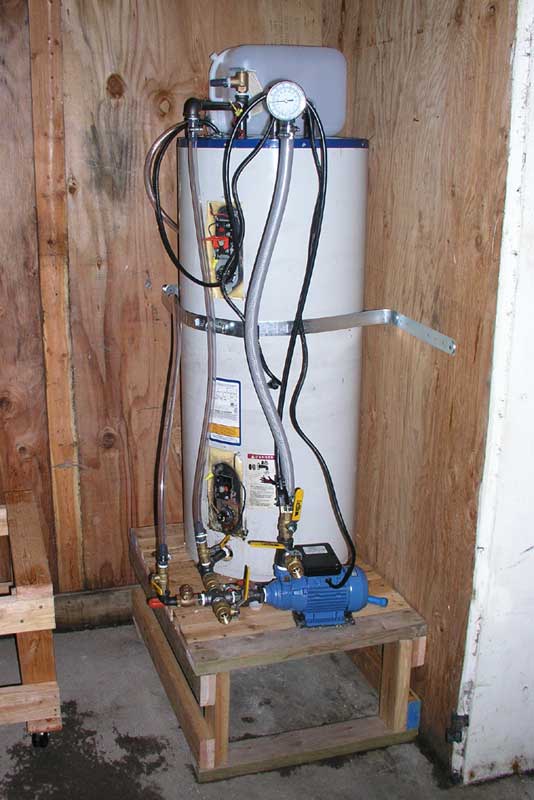
I finally finished all the barn project work. I have this processor seen above, a dual-tank wash system, and new this weekend – a bottom draining settling tank. With a stop at my Diesel buddy John’s house on my way home Friday night I picked up enough WVO to finally finish calibrating the processor. It turned out to be a lot of work. However, as of about 10pm tonight I know that it all functions properly. The pump works. The heating element works. The plumbing doesn’t leak. The settling tank works. The mist washer works. I’m ready to go B100! Reduce the Goolsbee family’s dependance on petroleum to near zero. (The Jaguar will still need gasoline, but I don’t drive it as much as even I’d like to!)
I was hoping to get an initial batch made, but that will have to wait. But I’m happy to have all the construction work done. I’ll likely make a few more settling tanks at some point… mostly to replace the filtration system I was using before. The steel barrels can just be used for storage after that. I have a source now for free poly barrels and this bottom draining system is a lot better than the siphoning I was doing before. Faster, cleaner… way better overall.
Here is how it works. The barrel is fitted with two drains in the bungs. One flush with the bottom, but the other with a six inch pipe extending up into the tank. Both drains come out of the bungs and bend 90-degrees, then out a foot long pipe to a ball valve. I cut a hole in the bottom of the barrel, which is now the top, and place a funnel in it to pour the oil into the barrel. The water and crud settles to the bottom of the oil naturally. The pipe with the six inch extension goes up above the water and crud. That way you can drain the clean oil out of the barrel above the level of the water and crud. Very handy. Once the accumulated crud reaches six inches (visible through the translucent poly barrel) you drain it off into a bucket from the other ball valve.
Before I settled in two poly tanks (now my washing system) and would siphon as low as I could from them into my filter barrels. It was easy to see the water at the bottom, but as it accumulated the system got harder to use. When I retired the first barrel to make it my wash tank it had easily 20 gallons of cruddy watery gunk at the bottom. It was a pain in the ass to get down from the platform and out of the barn. Now I’ll never accumulate more that about 5 gallons of water. I can drain it off as it settles.
I’ll post pictures of the whole thing soon.
Very cool home engineering.